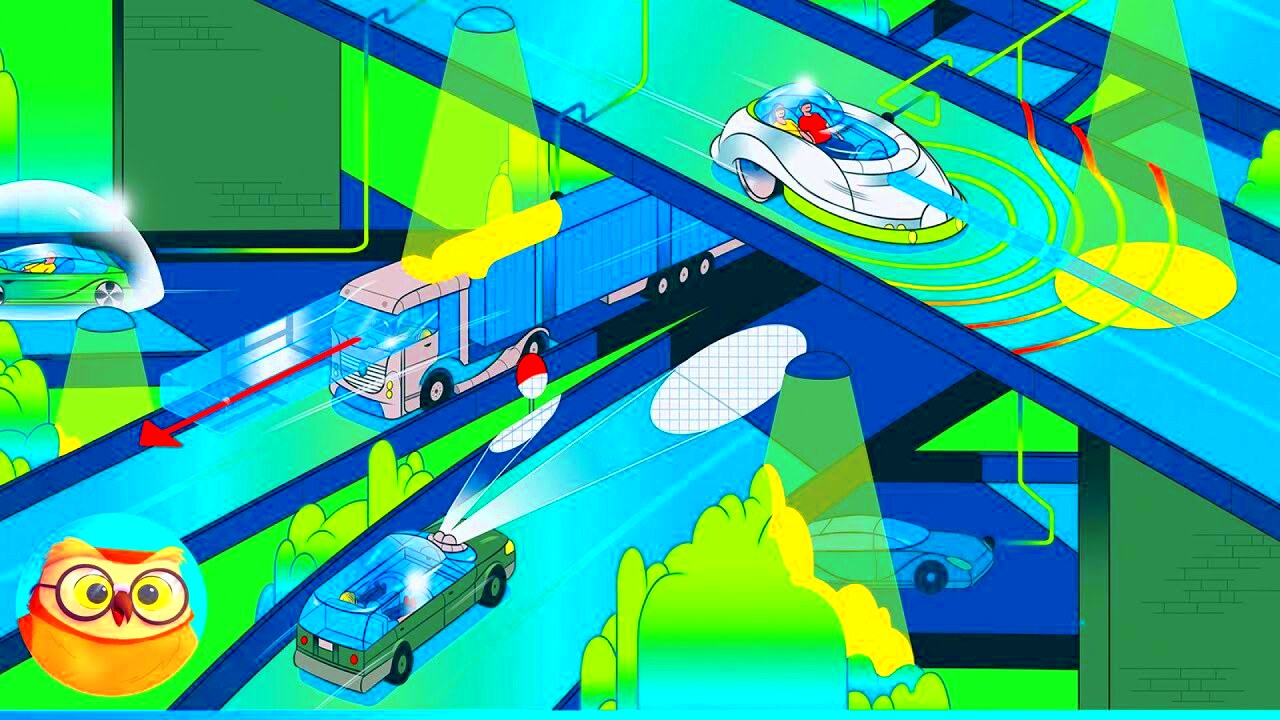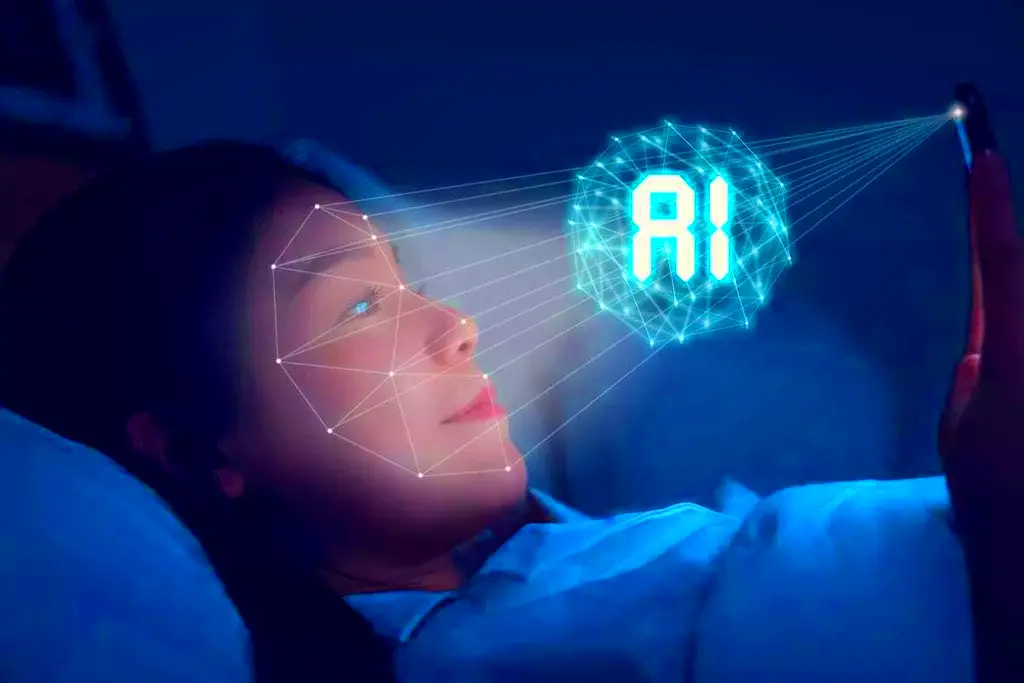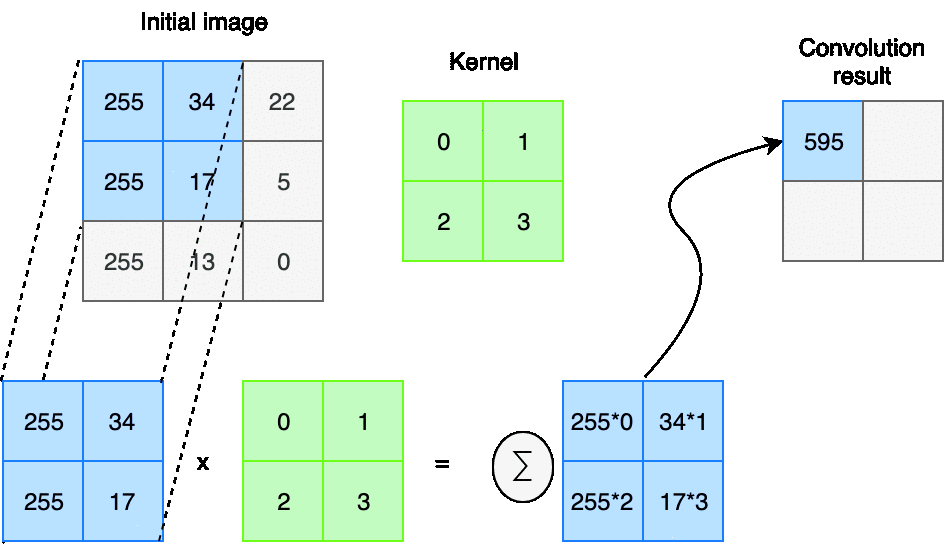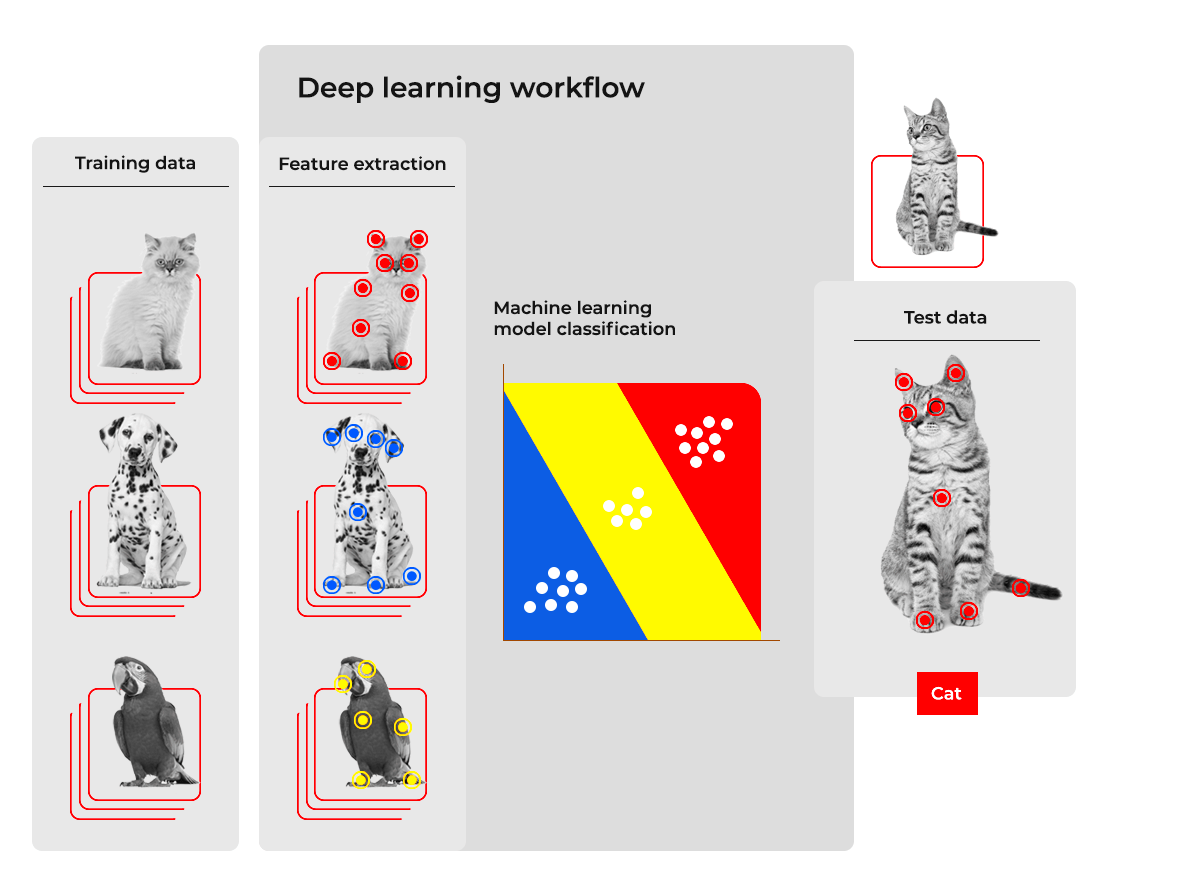Image recognition AI is a fascinating field in artificial intelligence that allows machines to identify and understand objects in images. This technology has transformed various industries by making tasks like image analysis, object detection, and visual search easier and more accurate. By mimicking human vision,
What is Image Recognition AI and How Does It Work

Image recognition AI involves the process of using machine learning algorithms to analyze and identify objects in an image. This process typically works by breaking down an
The main steps involved in image recognition are:
- Data Collection: The first step is gathering a large dataset of labeled images. These datasets are used to teach the AI system to recognize patterns and features in images.
- Preprocessing: Images are cleaned and resized to ensure uniformity. This makes it easier for the model to focus on the important features without being distracted by irrelevant details.
- Feature Extraction: The system detects important features like shapes, textures, and edges in the image.
- Model Training: The AI is trained using machine learning algorithms such as convolutional neural networks (CNNs). The model learns to match features from the image to specific categories or labels.
- Prediction: Finally, the trained AI model makes predictions on new images by identifying similar patterns to those it has learned.
By constantly learning and improving, image recognition AI can become more accurate over time.
The Key Components of Image Recognition AI

Creating a successful image recognition AI system involves several key components that work together to make the technology function effectively. These components include:
- Machine Learning Algorithms: These algorithms, such as Convolutional Neural Networks (CNNs), are the backbone of image recognition AI. They help the system learn from data and identify patterns in images.
- Training Data: A diverse and extensive dataset is essential for training the model. This dataset should include a wide range of images labeled with the correct categories for effective learning.
- Computational Power: Image recognition requires significant computational power, especially for training the model. GPUs (Graphics Processing Units) are commonly used for their ability to handle complex computations efficiently.
- Image Preprocessing: Before the model can start learning, the images need to be preprocessed to standardize them, making it easier for the AI to extract relevant features. This step includes resizing, normalization, and noise reduction.
- Neural Networks: Neural networks, specifically CNNs, are designed to mimic the way the human brain processes visual information. They are essential in detecting intricate patterns within images.
- Evaluation Metrics: After training, it's important to evaluate the model’s performance. Metrics like accuracy, precision, and recall are used to measure how well the AI can recognize images.
Together, these components work to create a robust system that can analyze, understand, and classify images with high accuracy.
Common Applications of Image Recognition AI

Image recognition AI has a wide range of applications across various industries, improving efficiency and accuracy in tasks that would otherwise be time-consuming or difficult. Some of the most common applications include:
- Healthcare: AI is used in medical imaging to help doctors identify conditions like tumors, fractures, and other abnormalities. It can quickly analyze X-rays, MRIs, and CT scans, providing valuable support for medical professionals in diagnosing diseases.
- Retail: In retail, image recognition AI powers visual search and recommendation engines, allowing customers to search for products by uploading images. It’s also used in inventory management and checkout systems, streamlining the shopping experience.
- Security: Surveillance systems use AI to detect unusual activities or identify faces. This can improve public safety by automating monitoring processes and alerting security personnel to potential threats in real-time.
- Autonomous Vehicles: Image recognition is a core technology in self-driving cars, helping them understand the environment around them. It enables the vehicle to identify objects, pedestrians, road signs, and other vehicles, improving safety and navigation.
- Social Media: Platforms like Instagram and Facebook use image recognition to tag people, suggest hashtags, and even filter content that violates guidelines, such as inappropriate images or hate speech.
- Manufacturing: AI is used in quality control systems to inspect products on production lines. It helps identify defects and ensures that only products meeting the required standards make it to the market.
These are just a few examples of how image recognition AI is making a real impact in everyday life, transforming industries and improving processes.
Steps to Create Image Recognition AI

Creating an image recognition AI system can seem complex, but breaking it down into clear steps can make the process more manageable. Here's an overview of the key stages involved:
- Define the Problem: Start by determining what you want your image recognition AI to do. Do you want it to classify objects, detect faces, or recognize specific features in images? Having a clear objective will guide the entire development process.
- Collect and Prepare Data: Gather a large and diverse set of images that are relevant to your task. This dataset should be labeled correctly so the AI can learn from it. You may need to preprocess the data by resizing images, converting to grayscale, or normalizing pixel values.
- Choose the Right Model: Select a machine learning model that fits your needs. Convolutional Neural Networks (CNNs) are commonly used for image recognition tasks because they excel at identifying patterns in images.
- Train the Model: Using your labeled dataset, train your AI model. This involves feeding the data into the model and allowing it to learn the patterns through repeated iterations. You’ll likely need a powerful computer or cloud-based services to handle the heavy computations.
- Test and Validate the Model: After training, it’s time to test the model’s performance. Use a separate set of images (not part of the training data) to see how accurately the AI can predict the correct labels or classifications. You may need to adjust the model based on the results.
- Fine-Tune and Optimize: If the model isn’t performing as expected, you can fine-tune it by adjusting hyperparameters, improving data quality, or adding more layers to the neural network. The goal is to increase accuracy and minimize errors.
- Deploy the Model: Once you’re happy with the model’s performance, it’s time to deploy it. This involves integrating the trained model into an application or system where it can make predictions in real-time, such as in a mobile app, web service, or robotic system.
Following these steps will help you create a functional and accurate image recognition AI system. Remember that the key to success is training with high-quality data and continuous testing and optimization.
Choosing the Right Tools and Technologies for Image Recognition AI
Choosing the right tools and technologies is critical to the success of your image recognition AI project. The right tools can make your development process faster, easier, and more effective. Here are the key factors to consider:
- Programming Languages: Python is the most popular language for image recognition AI due to its powerful libraries and frameworks. Libraries like TensorFlow, Keras, and PyTorch make it easier to build and train models for image recognition tasks. You may also use C++ for performance-critical applications.
- Machine Learning Frameworks: Frameworks like TensorFlow, Keras, and PyTorch are essential for building and training deep learning models. They provide pre-built functions and tools that make it easier to create complex models without starting from scratch.
- Cloud Platforms: Cloud services such as Google Cloud, AWS, and Microsoft Azure offer robust computing power for training models. They provide easy access to powerful GPUs and specialized hardware, which are essential for handling the large datasets used in image recognition.
- Image Processing Libraries: Libraries like OpenCV and Pillow are used to preprocess and manipulate images. These tools help with tasks like resizing, filtering, and converting image formats, ensuring the data is ready for training the AI model.
- Pretrained Models: If you're working with a limited dataset, you can take advantage of pretrained models like ResNet, VGGNet, or Inception, which have already been trained on large datasets. Fine-tuning these models can save you time and computational resources.
- Data Annotation Tools: High-quality labeled data is critical for training accurate models. Tools like Labelbox and RectLabel can help you annotate your image datasets effectively, ensuring that the AI has the correct information to learn from.
By selecting the right combination of these tools and technologies, you can streamline your development process, minimize challenges, and build an efficient image recognition AI system.
Challenges in Creating Image Recognition AI
Creating an image recognition AI system comes with its fair share of challenges. Despite the many advancements in AI technology, there are still several hurdles to overcome. Some of the most common challenges include:
- Data Quality and Quantity: High-quality, labeled datasets are crucial for training accurate models. However, collecting enough diverse data can be time-consuming and expensive. Furthermore, if the data is biased or unbalanced, the AI model may perform poorly on underrepresented categories.
- Data Preprocessing: Raw images need to be cleaned and preprocessed before they can be used for training. This can involve tasks like resizing, normalization, and noise reduction. Poor preprocessing can negatively affect the model's ability to recognize features accurately.
- Overfitting: Overfitting occurs when the AI model learns the details of the training data too well, making it perform poorly on new, unseen data. To avoid overfitting, techniques like data augmentation and regularization are used, but it can still be challenging to get the right balance.
- Computational Power: Training deep learning models, especially for image recognition, requires a lot of computational resources. Powerful GPUs and cloud computing services are often needed, which can be costly for small-scale projects or individual developers.
- Real-Time Performance: For applications like autonomous vehicles or security systems, image recognition AI needs to process and analyze images in real time. Achieving low-latency performance while maintaining accuracy can be a complex challenge.
- Adversarial Attacks: Image recognition AI can be vulnerable to adversarial attacks, where small, imperceptible changes to the input data can cause the model to make incorrect predictions. Ensuring robustness against such attacks remains an ongoing challenge in AI development.
Despite these challenges, with the right techniques, tools, and perseverance, it’s possible to overcome these obstacles and create effective image recognition AI systems.
How to Train Image Recognition AI for Accuracy
Training image recognition AI for accuracy requires a structured approach and the right techniques. Here’s a step-by-step guide to improving the accuracy of your AI model:
- Use High-Quality Data: The quality of your training data significantly affects the performance of your model. Ensure your dataset is diverse, well-labeled, and representative of the real-world conditions the model will encounter.
- Data Augmentation: Data augmentation techniques, like rotating, flipping, or zooming images, help artificially expand your dataset and reduce overfitting. This is especially useful if you have a small dataset.
- Choose the Right Model Architecture: The architecture of your neural network plays a critical role in its performance. Convolutional Neural Networks (CNNs) are widely used for image recognition due to their ability to capture spatial hierarchies in images.
- Regularization: Regularization techniques like dropout or weight decay help prevent the model from overfitting to the training data, leading to better generalization on new images.
- Transfer Learning: If you don’t have enough data, consider using transfer learning. This involves taking a pre-trained model (trained on a large dataset like ImageNet) and fine-tuning it on your specific dataset, saving time and computational resources.
- Optimize Hyperparameters: Hyperparameters such as learning rate, batch size, and number of layers can have a significant impact on the performance of your model. Using grid search or random search methods can help you find the best set of hyperparameters for your task.
- Cross-Validation: Cross-validation helps to evaluate the performance of your model on different subsets of the data, ensuring that it generalizes well to unseen images and doesn’t just memorize the training data.
- Monitor and Fine-Tune: Continuously monitor the performance of your model on a validation set during training. Fine-tune your model based on the results to improve its accuracy further. If necessary, you can retrain the model using more data or adjust the model’s architecture.
By following these steps and iterating on your model, you can improve the accuracy of your image recognition AI and create a more reliable system for real-world applications.
FAQ
1. What is the difference between image recognition and image classification?
Image recognition refers to the broader process of identifying and understanding objects in an image. Image classification is a specific task within image recognition where the goal is to categorize the entire image into predefined classes or labels.
2. How much data is needed to train an image recognition AI?
The amount of data required depends on the complexity of the task and the model you’re using. Generally, the more data, the better. However, with techniques like transfer learning and data augmentation, you can get good results even with a smaller dataset.
3. Can image recognition AI be used for real-time applications?
Yes, image recognition AI can be used in real-time applications, such as autonomous vehicles, security cameras, and interactive systems. However, achieving real-time performance requires powerful hardware and optimized models to process images quickly.
4. How do you handle imbalanced datasets in image recognition?
Imbalanced datasets, where some categories have fewer images than others, can be addressed by using techniques like oversampling the minority class, undersampling the majority class, or using class weights during training to ensure that the model doesn’t become biased towards the majority class.
5. Can image recognition AI be used for facial recognition?
Yes, image recognition AI can be used for facial recognition. It works by detecting unique features of a person’s face, such as the distance between eyes, nose, and mouth, and comparing them to a database of known faces.
Conclusion
Image recognition AI is a powerful technology that has already revolutionized numerous industries, from healthcare to retail, autonomous driving, and security. As the field continues to evolve, it offers the potential to solve increasingly complex problems by enabling machines to "see" and interpret the world much like humans do. However, building and training a reliable image recognition system is not without challenges, including the need for large, high-quality datasets, significant computational resources, and the prevention of overfitting. With the right tools, technologies, and careful attention to detail, these challenges can be overcome, leading to more accurate, efficient, and impactful AI models. As you embark on developing image recognition AI systems, the key is to stay focused on quality data, choose the right algorithms, and continuously optimize your models to achieve the best possible results. The future of image recognition AI is bright, with even more applications on the horizon that can enhance our everyday lives in exciting and innovative ways.











